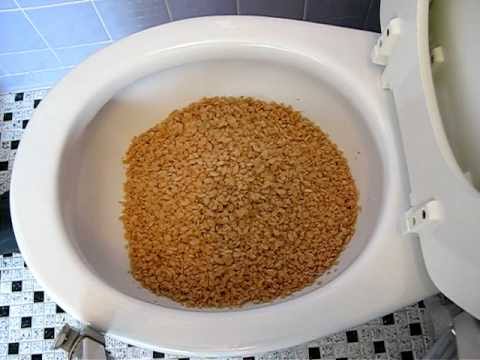This post which follows in relation to Flushing Food Down the Toilet? is truly entertaining. Read it yourself and see what you think of it.

Introduction
Many individuals are often faced with the predicament of what to do with food waste, especially when it involves leftovers or scraps. One common question that arises is whether it's all right to purge food down the commode. In this short article, we'll look into the reasons that people could consider flushing food, the repercussions of doing so, and alternate methods for correct disposal.
Reasons that people might consider purging food
Absence of understanding
Some people might not understand the potential harm triggered by flushing food down the commode. They might erroneously believe that it's a harmless method.
Ease
Purging food down the commode may appear like a fast and easy remedy to throwing away undesirable scraps, specifically when there's no nearby garbage can readily available.
Negligence
In some cases, individuals may merely pick to flush food out of large negligence, without taking into consideration the effects of their activities.
Consequences of flushing food down the commode
Ecological impact
Food waste that ends up in rivers can contribute to air pollution and harm water communities. In addition, the water used to purge food can strain water sources.
Plumbing problems
Flushing food can cause blocked pipelines and drains pipes, causing expensive plumbing repair work and hassles.
Kinds of food that need to not be purged
Fibrous foods
Foods with coarse structures such as celery or corn husks can obtain tangled in pipelines and create blockages.
Starchy foods
Starchy foods like pasta and rice can take in water and swell, causing blockages in pipes.
Oils and fats
Greasy foods like bacon or cooking oils need to never ever be flushed down the bathroom as they can solidify and trigger clogs.
Correct disposal techniques for food waste
Utilizing a garbage disposal
For homes furnished with waste disposal unit, food scraps can be ground up and purged through the plumbing system. However, not all foods are suitable for disposal in this fashion.
Recycling
Particular food product packaging materials can be reused, lowering waste and minimizing ecological influence.
Composting
Composting is an environmentally friendly way to take care of food waste. Organic products can be composted and used to enrich dirt for horticulture.
The significance of appropriate waste administration
Reducing environmental injury
Proper waste monitoring practices, such as composting and recycling, help decrease air pollution and protect natural resources for future generations.
Securing pipes systems
By avoiding the method of flushing food down the bathroom, home owners can avoid expensive plumbing fixings and maintain the integrity of their plumbing systems.
Final thought
Finally, while it might be tempting to purge food down the toilet for convenience, it is essential to understand the prospective effects of this action. By adopting correct waste administration practices and dealing with food waste responsibly, individuals can add to much healthier plumbing systems and a cleaner setting for all.
FLUSH FOOD DOWN THE TOILET?
FLUSHING FOOD CAN CAUSE BLOCKED DRAINS IN YOUR HOME
All of the plumbing fixtures in your home are connected to the same sewer pipe outside of your home. This outdoor sewer pipe is responsible for transporting all the wastewater from your home to the Council sewer mains. Even small pieces of food that go down the kitchen sink can cause problems for your sewer. It should therefore be obvious that flushing larger bits of food, such as meat, risks a clog in either the toilet itself or the sewer pipes. Flushing greasy food is even more problematic because oil coagulates when it cools, coating the interior lining of your pipes.
THE TOILET IS NOT A BIN
Food isn’t the only thing that people shouldn’t be flushing down the toilet. People use the toilet to dispose of all kinds of things such as tampons, makeup wipes, dental floss, kitty litter and even underwear. Water goes to great lengths to educate residents about the high costs and stress placed on wastewater treatment systems simply from people flushing the wrong stuff down the toilet. It costs taxpayers millions of dollars each year, and homeowners thousands in blocked drain repairs.
FLUSHING FOOD IS A WASTE OF WATER
Flushing food is a waste of our most precious resource - water. In June this year Level 1 water restrictions were introduced to protect water supply from drought conditions. Much of New South Wales continues to be affected by prolonged drought with recent figures revealing up to 97 per cent of the state remains in drought. Depending on whether you have a single or dual flush toilet, every single flush uses between five and 11 litres of water. In the current climate this is a huge amount of water to be wasting on flushing food that should be placed in the bin (or better yet, the compost).
https://www.jabplumbingsolutions.com.au/blog/can-you-flush-food-down-the-toilet

As a passionate reader about Think Twice Before Flushing Food Down Your Toilet, I assumed sharing that excerpt was a great idea. Those who enjoyed reading our blog entry please consider to share it. I take joy in reading our article about .
Request Service